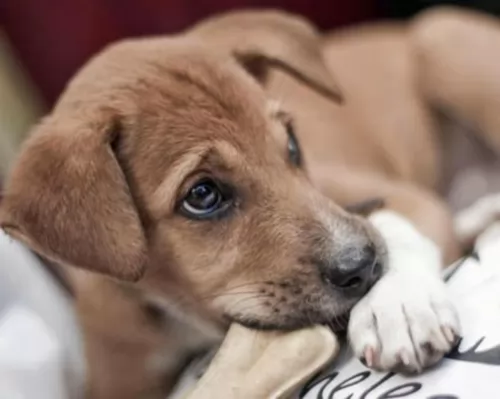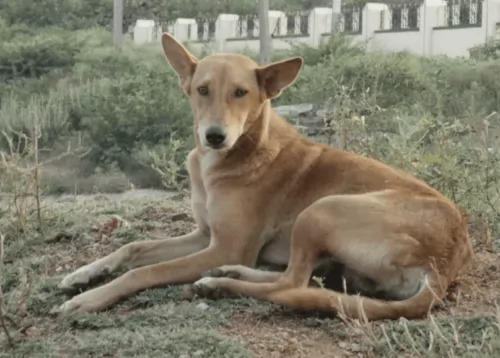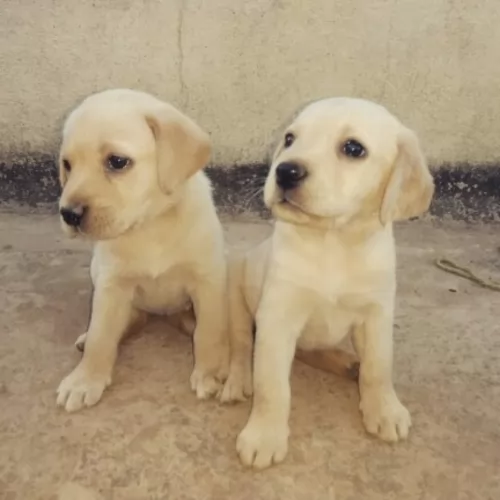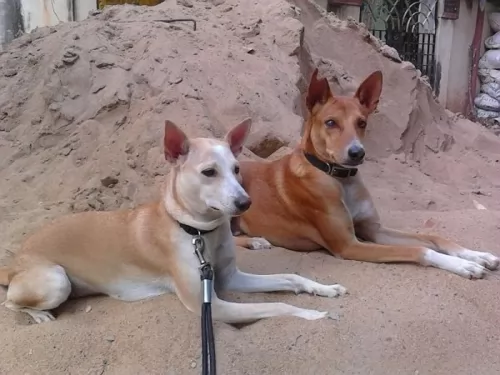 Indian Pariah Dog is originated from India but Yochon is originated from United States. Indian Pariah Dog may grow 36 cm / 15 inches higher than Yochon. Indian Pariah Dog may weigh 21 kg / 47 pounds more than Yochon. Both Indian Pariah Dog and Yochon has same life span. Both Indian Pariah Dog and Yochon has almost same litter size. Indian Pariah Dog requires Low Maintenance. But Yochon requires Moderate Maintenance
Indian Pariah Dog is originated from India but Yochon is originated from United States. Indian Pariah Dog may grow 36 cm / 15 inches higher than Yochon. Indian Pariah Dog may weigh 21 kg / 47 pounds more than Yochon. Both Indian Pariah Dog and Yochon has same life span. Both Indian Pariah Dog and Yochon has almost same litter size. Indian Pariah Dog requires Low Maintenance. But Yochon requires Moderate Maintenance
Basic Information
Group:
Miscellaneous dogs
Toy dog
undefined
India
United States
Life Span:
10 - 14 Years
10 - 14 Years
Other Names:
Indi-dog, In-dog
Bichyorkie • Borkie • Yo-Chon • Yochon • Yorki-Chon • Yorkichon • Yorkiechon • Yorkie-Chon • Yorkie-Bichon • Yorkshire Frise
Colors Available:
reddish-brown, Fawn
Black, Blonde, Brown, Cream, Dark, Brown, Golden, Gray, White
Coat:
Short and coarse
silky or curly very full coat
Temperament:
Affectionate, Aggressive, Alert, Cheerful, Courageous, Curious, Energetic, Friendly, Independent, Intelligent, Lively, Loving, Loyal, Outgoing, Playful, Protective, Responsive, Social, Stubborn, Territorial
Alert, Energetic, Friendly, Independent, Intelligent, Loving, Playful
Grooming:
Low Maintenance
Moderate Maintenance
Trainability:
Easy
Moderate
New Owners Friendly:
Yes
Yes
History
 The Indian pariah, known also as the Indi-dog or In-dog, is an ancient dog breed common throughout India as well as Bangladesh.
The Indian pariah, known also as the Indi-dog or In-dog, is an ancient dog breed common throughout India as well as Bangladesh.
A breed standard does exist for the dog with the Indian Kennel Club and the dog has also been recognized by the Primitive and Aboriginal Dog Society.
A great dog enthusiast, Indian environmentalist, M Krishnan, has written about this ancient dog breed, telling about its wonderful temperament and its hardy constitution.
The Yochon is a “designer dog” – a cross between the Yorkshire Terrier and the Bichon Frise. They are not a purebred and are not recognized by purebred dog clubs such as the American Kennel Club (AKC). They are small, playful, families dogs. Most of them bear the best characteristics of each of their founding breeds, but because they are crossbreeds and most will be multi-generational cross breeds, there are no two dogs alike.
Though not recognized by the traditional purebred clubs they are recognized by several hybrid canine clubs. The cross was developed in the United States.
Description
 The Indian Pariah dog is a medium sized, lanky looking dog with the males and females standing at 46cm to 64cm in height and weighing roughly between 15 to 30kg.
The Indian Pariah dog is a medium sized, lanky looking dog with the males and females standing at 46cm to 64cm in height and weighing roughly between 15 to 30kg.
These dogs aren't big eaters so they tend to be lean and muscular. This is a double coated dog with the hair being coarse and fawn in colour or reddish brown.
He has fairly large, erect ears and brown eyes. He has a long tail which is held down but when he is excited it is held high and over the back, curling at the tip. There is sometimes white around the face and chest.
Temperament:
The Pariah dog is a social dog but he is somewhat timid, even though they make excellent watch dogs, being territorial around their human family. Being territorial, he can have an aggressive side to him so it is wise to have him trained and socialized as then he is obedient and capable of getting on well with children in the home.
These dogs are also very intelligent and therefore easily trained. He is an active dog and likes to be kept busy, wanting to be participating in the activities of his human family.
Yochons go by many different names but in general they are toy dogs, weighing in at under 20 pounds, most weighing 6-12 pounds. They have black noses, long tails, and round eyes. Their muzzles are blunt and their skulls are also round.
They have fluffy, full coats that can range from tan, to brown to black. They can also be white or cream. Their ears can be either hanging or erect.
Characteristics
 The Indian Pariah dog is just an ordinary dog looking to be a superb companion for you. These are dogs with no airs and graces and in fact they have lots of positive attributes about them.
The Indian Pariah dog is just an ordinary dog looking to be a superb companion for you. These are dogs with no airs and graces and in fact they have lots of positive attributes about them.
They are just your ordinary, social dogs who are able to form strong, loyal friendships with their human owners. He is a faithful dog breed and he has had a long association with humans dating back to thousands of years. He is healthy and cheerful and he is just waiting for you to give him a chance so that he can show you what a cheerful, playful, devoted, wonderful friend he can be to you too.
1 Children friendliness -yes very good but watch careful that children do not hurt them as they are so small and fragile.
2.Special talents – Loves families and playing
3.Adaptability – adapts well to apartments can play indoors
4.Learning ability – intelligent and independent
Health Problems
 This is a dog which can live to between 13 and 15 years of age when he is treated well.
This is a dog which can live to between 13 and 15 years of age when he is treated well.
These Indian Pariahs are a natural dog breed, and to this end they are free of genetic health concerns such as hip dysplasia which is a very common ailment with nearly all dogs.
Remember that every dog stands a good chance of picking up some life-threatening illnesses if not vaccinated against them. Some of these diseases to be concerned about are canine distemper and parvo-virus. Rabies, kennel cough and parasites such as fleas and ticks can also pose a real danger to your pet.
The Pariah has been around for a very long time and today he is a robust, low maintenance pet that isn't going to cost you a lot of money .
Both founding breeds are vulnerable to a few medical conditions. These include:
• Legg-Calve-Perthes Disease – insufficient blood to hind legs, thigh bones causing lameness.
• Patellar Luxation – slipped kneecaps can also cause lameness.
• Dental Issues – keep teeth brushed and cleaned.
• Hypothyroidism – can be treated with medication.
• Reverse Sneezing
• Allergies
• Collapsed Trachea due to small size – be careful with them at all times.
Caring The Pet
 This is a low maintenance dog who also happens to shed little. A brush once or twice a week will be sufficient and it will keep the fur shiny and healthy.
This is a low maintenance dog who also happens to shed little. A brush once or twice a week will be sufficient and it will keep the fur shiny and healthy.
General Care:
Your puppy will need to be vaccinated at 6 weeks of age. There are some veterinary clinics in India that offer free vaccine shots. Your puppy will be dewormed too. Make sure he has a nice dry, warm place to sleep, and for during the day, ensure that there is a shady spot for him too.
Diet:
It's always a good idea to try and feed your puppy the best food there is. If you visit a veterinary clinic, find out what the most appropriate food would be for your puppy and how often you should feed him during the day.
If you feed your adult Indian Pariah dog kibble and you're able to, try and add in some home-made food too such as cooked chicken or rice. Some raw meat added in from time to time will also do your dog the world of good. Make sure there is always a bowl of cool, clean water standing by.
3.Feeding the puppy – do not overfeed. Use a high quality puppy toy breed kibble. Feed 3-4 X day.
2.Feeding the adult – do not overfeed. Use a high quality adult toy breed kibble. Feed at least twice a day.
3.Points for Good Health hearty/general good health and stamina
4. Games and Exercises does not need a lot of exercise . They enjoy obedience and agility trials.
Comparison with other breeds
- Yochon vs English Bulldog - Breed Comparison
- Yochon vs German Shepherd - Breed Comparison
- Yochon vs Golden Retriever - Breed Comparison
- Yochon vs Labrador Retriever - Breed Comparison
- Yochon vs West Highland White Terrier - Breed Comparison
- Yochon vs French Bulldog - Breed Comparison
- Yochon vs Beagle - Breed Comparison
- Yochon vs Yorkshire Terrier - Breed Comparison
- Yochon vs Poodle - Breed Comparison
- Yochon vs Rottweiler - Breed Comparison
- Yochon vs Boxer - Breed Comparison
- Yochon vs English Pointer - Breed Comparison
- Yochon vs Siberian Husky - Breed Comparison
- Yochon vs Doberman Pinscher - Breed Comparison
- Yochon vs American Bully - Breed Comparison
- Yochon vs Abruzzenhund - Breed Comparison
- Yochon vs Affenpinscher - Breed Comparison
- Yochon vs Afghan Hound - Breed Comparison
- Yochon vs Aidi - Breed Comparison
- Yochon vs Airedale Terrier - Breed Comparison
- Yochon vs Akbash Dog - Breed Comparison
- Yochon vs Akita - Breed Comparison
- Yochon vs Africanis - Breed Comparison
- Yochon vs Askal - Breed Comparison
- Yochon vs Atlas Terrier - Breed Comparison
- Indian Pariah Dog vs English Bulldog - Breed Comparison
- Indian Pariah Dog vs German Shepherd - Breed Comparison
- Indian Pariah Dog vs Golden Retriever - Breed Comparison
- Indian Pariah Dog vs Labrador Retriever - Breed Comparison
- Indian Pariah Dog vs West Highland White Terrier - Breed Comparison
- Indian Pariah Dog vs French Bulldog - Breed Comparison
- Indian Pariah Dog vs Beagle - Breed Comparison
- Indian Pariah Dog vs Yorkshire Terrier - Breed Comparison
- Indian Pariah Dog vs Poodle - Breed Comparison
- Indian Pariah Dog vs Rottweiler - Breed Comparison
- Indian Pariah Dog vs Boxer - Breed Comparison
- Indian Pariah Dog vs English Pointer - Breed Comparison
- Indian Pariah Dog vs Siberian Husky - Breed Comparison
- Indian Pariah Dog vs Doberman Pinscher - Breed Comparison
- Indian Pariah Dog vs American Bully - Breed Comparison
- Indian Pariah Dog vs Abruzzenhund - Breed Comparison
- Indian Pariah Dog vs Affenpinscher - Breed Comparison
- Indian Pariah Dog vs Afghan Hound - Breed Comparison
- Indian Pariah Dog vs Aidi - Breed Comparison
- Indian Pariah Dog vs Airedale Terrier - Breed Comparison
- Indian Pariah Dog vs Akbash Dog - Breed Comparison
- Indian Pariah Dog vs Akita - Breed Comparison
- Indian Pariah Dog vs Africanis - Breed Comparison
- Indian Pariah Dog vs Askal - Breed Comparison
- Indian Pariah Dog vs Atlas Terrier - Breed Comparison
 Petzlover
Petzlover Indian Pariah Dog is originated from India but Yochon is originated from United States. Indian Pariah Dog may grow 36 cm / 15 inches higher than Yochon. Indian Pariah Dog may weigh 21 kg / 47 pounds more than Yochon. Both Indian Pariah Dog and Yochon has same life span. Both Indian Pariah Dog and Yochon has almost same litter size. Indian Pariah Dog requires Low Maintenance. But Yochon requires Moderate Maintenance
Indian Pariah Dog is originated from India but Yochon is originated from United States. Indian Pariah Dog may grow 36 cm / 15 inches higher than Yochon. Indian Pariah Dog may weigh 21 kg / 47 pounds more than Yochon. Both Indian Pariah Dog and Yochon has same life span. Both Indian Pariah Dog and Yochon has almost same litter size. Indian Pariah Dog requires Low Maintenance. But Yochon requires Moderate Maintenance The Indian pariah, known also as the Indi-dog or In-dog, is an ancient dog breed common throughout India as well as Bangladesh.
The Indian pariah, known also as the Indi-dog or In-dog, is an ancient dog breed common throughout India as well as Bangladesh. The Indian Pariah dog is a medium sized, lanky looking dog with the males and females standing at 46cm to 64cm in height and weighing roughly between 15 to 30kg.
The Indian Pariah dog is a medium sized, lanky looking dog with the males and females standing at 46cm to 64cm in height and weighing roughly between 15 to 30kg. The Indian Pariah dog is just an ordinary dog looking to be a superb companion for you. These are dogs with no airs and graces and in fact they have lots of positive attributes about them.
The Indian Pariah dog is just an ordinary dog looking to be a superb companion for you. These are dogs with no airs and graces and in fact they have lots of positive attributes about them. This is a dog which can live to between 13 and 15 years of age when he is treated well.
This is a dog which can live to between 13 and 15 years of age when he is treated well. This is a low maintenance dog who also happens to shed little. A brush once or twice a week will be sufficient and it will keep the fur shiny and healthy.
This is a low maintenance dog who also happens to shed little. A brush once or twice a week will be sufficient and it will keep the fur shiny and healthy.